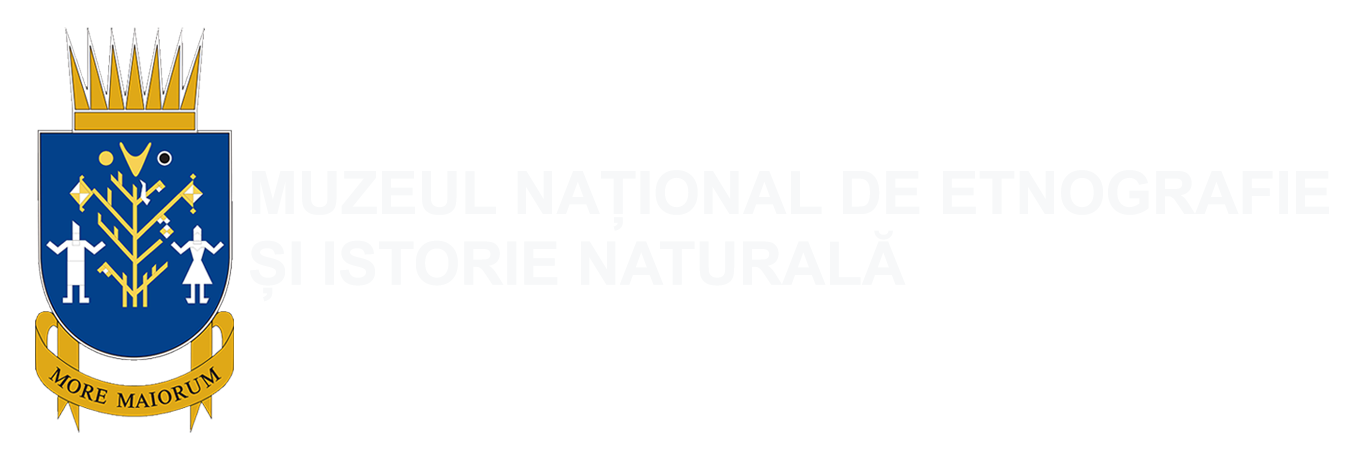Having the generic “Nature. Human Being. Culture", the permanent exhibition was realized during the years 1988-1994, according to the concept elaborated by the group of museographers, led by Mihai Ursu, and to the design project, made by Lev Burman. It covers a surface of 2000 square meters.
It is an interdisciplinary exhibition that reflects the global problem of the interaction between Human Being and Nature basing on the local experience. Starting from the idea that Nature is the environment of any human community, and Culture is a reflection of the experience of human adaptation to the natural environment, the exhibition demonstrates the evolution of usage of natural resources and the development of culture of human communities, which populated the area between Prut and Nistru in different historical periods. It denotes the Human Being-Nature creative synthesis, the transformation of Nature, as long as it is known, the difficult path of knowledge development, from the sacralization of the forces of Nature, to their consumer domination by humans.
The exhibition also illustrates the problems of the development of ethnos and traditional culture in all its diversity, focusing mostly on the second - Nature-Culture - created by man. Demonstrating the harmony Man-Nature, which is illustrated through masterpieces of popular art that reflect the beauty of the environment. Simultaneously, there are represented reprehensible samples, the results of the irresponsible attitude towards the surrounding Nature, which led to the destruction of its balance. Elucidating the conflicts between Human Being and Nature, the exhibition designs some directions for settling them, basing on the advanced experiences of economic and rational use of the natural resources. There are also specified the tendencies of improving the values of society.
DEINOTHERIUM PROAVUM
Using an original technique, here is presented one of the most valuable exhibits of the museum – the complete skeleton of the gigantic dinothere (Deinotherium proavum) living on the territory of the Republic of Moldova 10 million years ago. It is a unique exhibit in the country and in Europe since it is the only original complete skeleton of this species of dinothere in the world. The showcases along the walls of the hall display the diversity of the fossil flora and fauna of the Miocene Epoch, whose representatives lived contemporaneously with this gigantic proboscidean in the territory between Prut and Nistru.
THE OPTIMIZATION OF NATURE AND CULTURE
After elucidating the processes developed in our territory before the appearance of destructive conflicts between man and nature, several ways of solving the latter are proposed in the last hall of the exhibition. On the basis of knowledge of the laws of nature, of positive experience in the sustainable use of natural resources, a number of concrete steps toward the optimization of relations between man and nature in the Republic of Moldova are indicated: the creation of agrarian ecosystems harmonizing with the natural environment, natural reservations that will stop the process of destroying nature and will gradually restore the areas irrationally grasped from nature, elaborating a functional environmental legislation.
At the same time, on the basis of our traditional cultural heritage, certain positive tendencies in our spiritual continuity are specified. The exhibits and photographs in showcases demonstrate the revival of traditional arts and crafts and the development of professional arts, which reflects the positive processes that have occurred since the Republic of Moldova declared its independence. The elaboration of a government program of strategic importance that would support the development of our national culture would contribute to breaking the impasse.
The tendencies towards cultural globalization determine local communities reassess, protect and promote particularly the elements of ethnographic heritage and of the cultural heritage generally. Thus, the ritual props, the ethnographic photos, the items from the museum collections, presented in show cases, aim to reconstruct and present the family holidays and customs, knowledge, beliefs, the ritual and social practices of the calendrical holidays that are a part of the intangible cultural heritage and of our spiritual identity. In the same show case are presented object-documents pertaining to Men’s group Colindat, Christmas-time ritual and to the Cultural practices associated to the 1st of March (Mărțișor). These elements were included with the important support of the experts of the museum in the Representative List of the Intangible Cultural Heritage of Humanity.
The exhibition Nature. Man. Culture finishes with the work of the woodcarver R. Vieru The Doors, with carved solar rosettes as a triumph of a harmonious life on Earth. The Doors is an appeal addressed to the public to realize the fact that humankind can survive on Earth only by restoring the balance in its relations with nature, while preserving and enhancing the value of the ancestors’ spiritual legacy.
The conception of the exhibition was elaborated and realized by museographers M. Ursu, Gr. Cemârtan, M. Ciocanu, I. Bălteanu, S. Șarănuță, T. Burac, S. Macovei, V. Buzilă, E. Bâzgu, R. Tabuică. The project of the exhibition design and arrangements was executed by L. Burman, L. Cernețki, K. Iaroținski, K. Iudin, Р. Belogorțev, А. Bulâciov, V. Șevciuk.
INTRODUCTORY HALL
The exhibition begins with the introductory hall dedicated to the historical background of the museum and the presentation of its founders and collections. The exhibits in the hall demonstrate the evolution of life on Earth, the diversity of present-day nature, and the evolution of the culture of the human communities that lived in different historical periods on the nowadays territory of the Republic of Moldova. The most representative items from the collections of the museum exhibited in this hall permit the visitor perceive a great diversity of relations between man and nature, to get acquainted with two main dimensions of human activity – understanding and developing the world. The difficult process of gaining knowledge about the world is demonstrated in 4 showcases located crosswise, starting from the worship of natural forces to their domination and merciless exploitation by humans.
NATURAL LANDSCAPES OF MOLDOVA
This hall presents the diversity, riches, and beauty of nature, in which our nation has lived and created our culture. Four murals (authors: V. Zâkov, P. Belogorțev and A. Bulâciov) recreate the typical landscapes specific for the natural ecosystems of four geographical zones of the Republic of Moldova: the Nistru Uplands, the Woodlands, the Lower Prut Floodplain, and the Bălți Steppe. The exhibits presented in showcases and before panoramas give ample information about the riches of fauna and flora of each natural ecosystem. The main thematic emphasis is put on illustrating life in these ecosystems. Nature has been the habitat of humanity for millennia, determining the style of life of human communities and their character. The beneficial influence of nature on the national character of folk arts and occupations in different zones is revealed in songs, legends, and ballads about the beauty of our native land.
The comprehensive map of the Republic of Moldova, located in the center of the hall (authors: I. Belenki and E. Costiuc), reflects at a reduced scale the geographical distribution of natural landscapes, the degree of their development by man, the topographic features that have determined both the locations of settlements and the formation of the national character of the Romanians from Bessarabia. The visitor can also see the interdependence between the diversity of topography, the natural riches, and the changes brought by man through the usage of the natural environment, which has already reached 92% of the whole territory of the Republic of Moldova.
SOILS AND THE AGRICULTURAL LANDSCAPES OF MOLDOVA
Since ancient times, man has been transforming nature trying to understand it. While making use of the natural environment, man has created “the second nature”, which bears the imprints of this environment. The exhibition from this hall shows the creation of agrarian ecosystems as a result of human economic activity, which is determined by the presence of the most valuable natural treasure of our native land – chernozem or black earth. The most common types of soils out of more than 750 types of soils identified in the country and various agrarian systems created thanks to soil diversity are presented. The uniqueness of the Republic of Moldova, where chernozems cover 80% of the land area of the country (33,7 thousand sq.m.), is demonstrated. The hall also emphasizes the consequences of the creation of agrarian ecosystems, urbanization, and industrial development, which have become indicators of conflicts in the anthropogenic landscapes from the Republic of Moldova.
MEMORIAL TO NATURE
The goal of the hall exhibition called The Memorial to Nature is to show the negative consequences of the unsustainable use of our natural resources. Some of the species of plants and animals that have become rare, threatened with extinction, or extinct as a result of human activity are exhibited. They testify to the incompetence and irresponsibility of society in relation to nature and demonstrate the necessity of knowing natural laws for the elaboration of urgent measures to stop the process of degradation of the natural environment and to minimize the anthropogenic impact.
BIOSPHERE
This hall is unique in the museum since it has no other exhibits except a mural painting (fresco) done on all its walls (the author of the concept is O. Negreanu, the author of the mural is I. Daghi). It shows the evolution of the biosphere on Earth from the appearance of the lithosphere, atmosphere, hydrosphere and earthly life to the present day. The mural helps the visitors understand that the biosphere is the living shell of the planet in which life develops in all its aspects. Man appeared on Earth much later, having created numerous civilizations. Each of them left its trace, having changed the natural environment. The main goal of mankind was to snatch from nature as much of its riches as possible. This desire inspired man to invent different tools, machines, instruments, and technologies, with the help of which human intervention in the biosphere is becoming more and more noticeable and uncontrollable. The mural reflects the beauty and harmony of Earth before the emergence of the first civilizations and its present state as a result of human activity. Today the planet is covered with a mask of metal and concrete. By means of technological inventions, man aspires to subdue the entire natural environment. All this has estranged man from its native living environment within nature.
PALEOZOIC AGE
With the help of fossils, pictures, schemes, diagrams, and maps, the exhibition of the hall illustrates the earliest stages of the geological history of Earth: the Archean and Proterozoic stages of the Cryptozoic and the six geologic periods of the Paleozoic Era of the Phanerozoic Eon. The showcases contain paleogeographic maps reflecting the distribution of land masses and seas, lithological columns indicating the frequency of groups of rocks characteristic for each period, and conventional reconstructions of corresponding paleolandscapes. The fossilized imprints, drawings with reconstructions of various organisms, and a mural painting of a conventional paleolandscape of the Paleozoic age (author A. Bulâciov) illustrate the evolution of life from the lowest forms to primitive vertebrates, represented by placoderms, amphibians, and reptiles. The vegetation was dominated by tree-like plants forming tropical forests, which became the basis for the formation of coal strata.
MESOZOIC AGE
The Mesozoic Era started around 235 million years ago and continued for about 169 million years. Paleogeographic maps, lithological columns, fossilized imprints of ancient organisms and the fossilized bones of different animals illustrate the evolution and the diversity of the organic world on the territory of the Republic of Moldova within this era. The mural painting (author A. Golikov) helps visitors visualize the proportions of those animals and proves that the Mesozoic was not accidentally named the age of reptiles since the latter dominated the land, water, and air. The appearance of angiosperms, the first birds and mammals are also illustrated. Throughout this era, continental conditions prevailed, and the evolution of the biosphere was determined by geological processes on the Earth, which resulted in significant climate changes. Various natural cataclysms led to the disappearance of gigantic reptiles.
CENOZOIC AGE
The hall exhibition illustrates the Cenozoic Era, or the era of new life, which covers the period from 66 million years ago to the present. As well as in the previous halls, the two periods of this era, the Paleogene and the Neogene one, including their epochs, are presented in showcases. Due to numerous paleontological discoveries in Neogene sediments, the territory of the Republic of Moldova is considered an open-air paleontological museum. The mural painting of this hall (author Vl. Radzevici) reflects the flora and fauna characteristic of the Cenozoic.
ANTHROPOGENESIS PERIOD
This section of the exhibition represents the Quaternary or Anthropogenesis Period, i.e., the time of the appearance of humans and present-day species of plants and animals, suggesting the beginning of the interaction between man and nature. The exhibition, having the form of a conventional cave, illustrates both the process of understanding and developing the natural environment and the first results of these actions (author K. Iudin). The mural painting of this section (author A. Bulâciov) represents a symbolic image showing the abandonment of the cave by early humans and the transition from hunting and gathering to sedentariness. With the development of agriculture, the first changes of nature by man that testify to the beginning of its conquest are observed. The bones of the first animals domesticated by man substantiate this process. The skeleton of a cave bear exhibited in the hall is of special significance. First being a totem, the animal was exterminated after having lost the competition for living space in caves, becoming one of the first species sacrificed as a result of the reckless human attitude.
THE ARCHAEOLOGICAL CULTURES BETWEEN PRUT AND NISTRU
The display of initial forms of human habitation in the natural environment continues in the section “At the Dawn of Culture”. On the basis of archaeological materials, the exhibition demonstrates the transition of man from hunting to the agricultural practice of breeding and raising livestock, from gathering to cultivating the soil and growing and harvesting crops, which constituted a true revolution in the usage of nature by man. These processes are illustrated on the basis of the cultures of human communities that lived on the territory between the Prut and Nistru rivers, from that of the first farmers, known as the Cucuteni-Tripolye culture, to those of the Getae-Dacians and of migratory peoples, bearing the imprint of the specific of the natural environment from this region.
THE FORMATION AND DEVELOPMENT OF CULTURE IN THE BESSARABIAN AREA
The exhibition of this big section of the Museum reflects the aspects of development of a nation and a traditional culture in the context of the man-nature relationship, demonstrated on the example of the Moldova Principality and of the Bessarabian area during the periods of the Russian Empire and of Great Romania. The main emphasis is put on culture, which is understood as “the second nature” created by man. The originality of our ethnic heritage, representing the agro-pastoral synthesis combined with traditional trades and crafts, is delineated with the help of authentic items. The section presents the ethnic pattern for establishing settlements in view of their relations with the natural environment and building dwellings and architectural monuments, thereby reconstructing the integrity of people’s life displayed as a system in which work, customs, traditions, and rituals are closely intertwined.
The first complex gives a general description of the specificity of nature and culture in the period of creation of the Moldovan medieval state. The mural painting (author P. Belogorțev) illustrates a legend about Dragoș (according to the chroniclers’ tradition, the founder of the medieval state Țara Moldovei) and, at the same time, demonstrates the specificity of the environment during that historical period, which determined the main occupations of the population. The instruments of labor exhibited on the podium, the archaeological items in the showcases, the documents and other written sources confirm these relations. The royal doors from the altar of an old wooden church and the hope chest with an old Bible on it testify to the spirituality of our ancestors, who adopted Christianity in the first centuries of the Common Era. Two outstanding personalities immortalized the history of the nation: Ștefan cel Mare și Sfânt (Stephen the Great and Saint), the defender of peace and Christianity and the builder of places for public worship, and Dimitrie Cantemir, prince, scholar and philosopher. The reconstruction of a part of the wall of a medieval fortress in Orheiul Vechi (Old Orhei) reveals the continuous habitation on this territory and the importance of this monument in our culture.
“CASA MARE” (PEASANT PARLOUR)
After going up the spiral staircase, visitors totalize the centuries-old experience of coexistence of man and nature, when the aspirations to understand and use the latter in the process of cultural development were in full harmony with the natural environment. This harmony is demonstrated through the beauty of our national folklore, which reflects the charm of surrounding nature. The exhibition of this hall is called “Casa Mare” (a traditional Moldovan parlour; the best-decorated room in the house), where, according to our national traditions, the most beautiful textiles (carpets, clothes etc.), ritual objects, and dowry are kept and where the most important celebrations, ceremonies, and other special occasions in the life of the family are observed.
The Bessarabian traditional wall-carpets bear a special value, due to their inscription in the Representative List of the Intangible Cultural Heritage of Humanity (2016). All these heritage items, as well as the knowledge concerning the techniques of making them, prove the originality of the folk creation and art, reflect the spiritual wealth and refinement of our forerunners’ spiritual conception, who created treasures inspired from the majesty of nature. These are illustrated in the two sections of the exhibition called Nunta (a traditional Moldovan wedding party) and Jocul (a traditional Moldovan dance). At the base of the mural painting illustrating the traditional celebration Jocul (author F. Hămuraru), national costumes from all the ethnographic zones of the country, representing a harmonious combination of natural and human creations.
The custom of carrying out a dowry from the house of the bride, staged against the picturesque landscape of the Woodlands (author M. Statnâi), crowns the diversity of our rich cultural heritage. The wooden and stone elements of rural architecture testify to the ability of man to fit within the natural frameworks, as well as the role of nature on shaping the local cultural specificity, the development of certain crafts.
ECOLOGY OF NATURE AND CULTURE
The exhibition of this hall represents a documentary demonstration of the destruction of the balance in nature and the consequences of this process. As a result of urbanization and industrialization, humanity has changed its attitude towards natural environment, cultivating a tendency to take from nature more space and resources without taking into consideration its laws and needs. By substituting natural ecosystems with anthropogenic ones, man uses too much of technology and chemical products (pesticides), which leads to unprecedented environmental pollution. The photographs and exhibits in this hall reflect the current deplorable environmental situation in the Republic of Moldova, where, as a result of soil degradation and water and air pollution, increasing numbers of species of insects, plants, birds and mammals disappear, anomalies develop in the animal world, and the health of people worsens.
The graphic work (author Vl. Penighin) exhibited in the hall demonstrates the danger of destroying life on Earth as a result of our reckless attitude towards nature and helps the visitors understand the gravity of the existing environmental situation and the importance of personal contributions toward tackling the ecological crisis. The negative processes that take place in the natural environment represent the direct effect of changes in the spiritual domain. There is a direct correlation between the environmental situation and the spiritual state. The insipid imitations of traditional arts and crafts, photographs of destroyed monuments of traditional culture, churches, monasteries, and cemeteries testify to the gravity of the impact of the spiritual crisis and its fatal consequences in the nearest future. This leitmotiv persists in the graphic work of the artist Vl. Penighin. The sculpture “Tree of Life”, which is visible from the first hall, reminds us of our responsibility for ensuring the continuation of life on Earth.
-
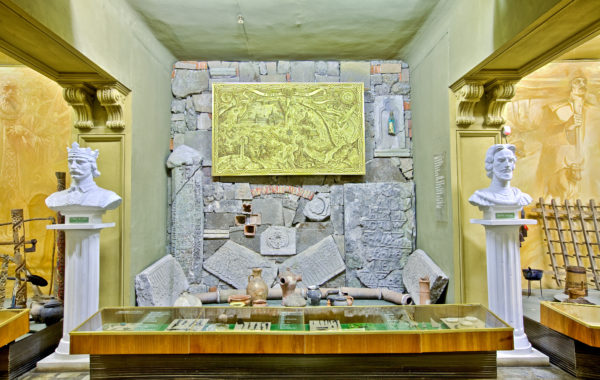
Culture Formation and Development in the
The exhibition of this large section of the Museum focuses on aspects of the development of the people and traditional…
-

Formarea și Dezvoltarea Culturii în Spaț
Expoziţia acestui mare compartiment al Muzeului vizează aspectele dezvoltării poporului şi a culturii tradiţionale în contextul relaţiilor om-natură, demonstrate pe…
-
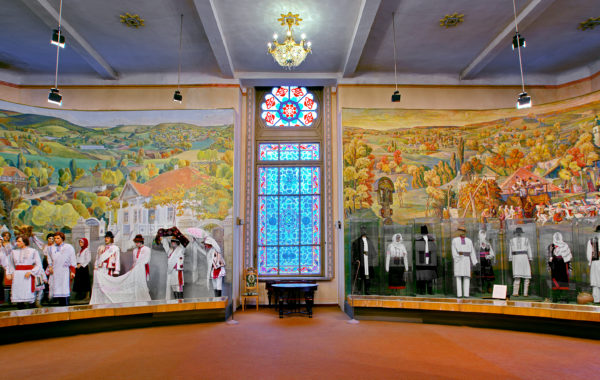
Big house
Climbing to the ground floor on the spiral staircase, the visitor imagines the imaginary experience of man's coexistence with nature,…
-

Casa Mare
Urcând la parter pe scara spiralică, vizitatorul totalizează imaginar experienţa multiseculară de convieţuire a omului cu natura, când tendinţa de…
-
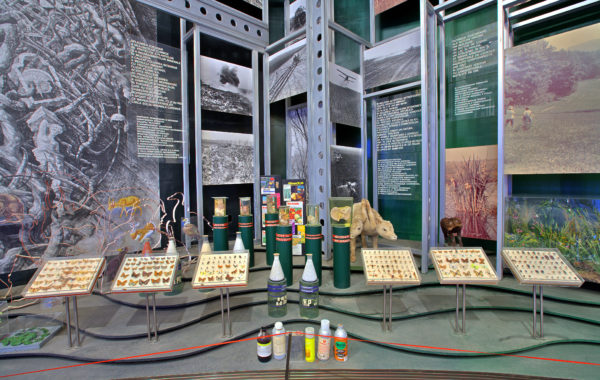
Ecology of Nature and Culture
The exhibition arranged in this room is a documentary demonstration of the destruction of balance in nature and the consequences…
-

Ecologia Naturii și Culturii
Expoziţia amenajată în această sală reprezintă o demonstraţie documentară a distrugerii echilibrului în natură şi consecinţele acestui proces. Din cauza…
-
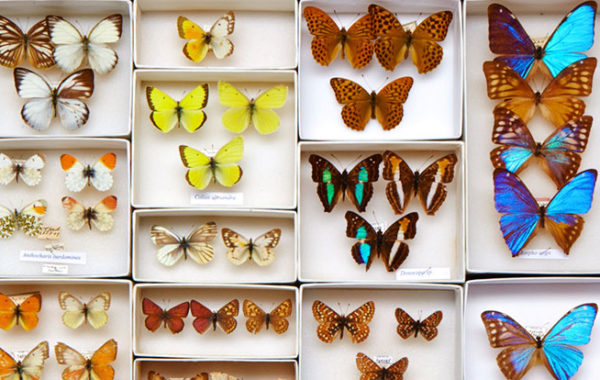
Entomological collection
The core of entomological collections was created in the late nineteenth century by F. Ostermann, P. Zabarinski, I. Taranin. At…
-

Colecția entomologică
Nucleul colecţii entomologice a fost creat la sfârșitul secolului al XIX-lea de F. Ostermann, P. Zabarinski, I. Taranin. La începutul…
-
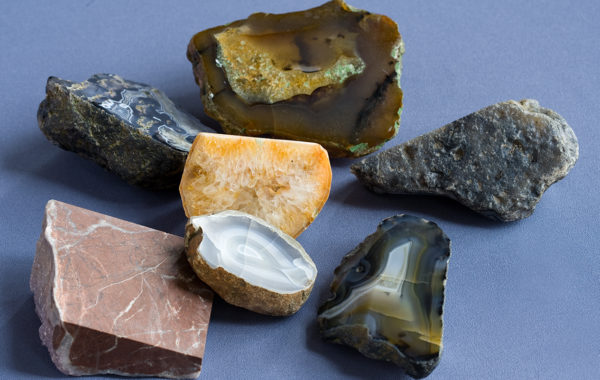
Petrographic collection
The petrographic collection consists of samples collected from pre-Cambrian, Paleozoic, Mesozoic and Cainozoic geological formations, which reflect the geological evolution…
-

Colecția petrografică
Colecţia petrografică este constituită din mostre colectate din formațiunile geologice de vârstă precambriană, paleozoică, mezozoică și cainozoică, care reflectă evoluția…
-
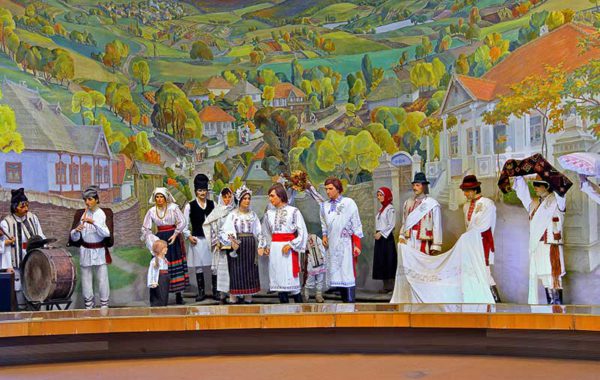
Popular dress collection
The collection of folk costumes consists of shirts, belts, catrints, bounces, itari, sum ane, headscarves, aprons, skirts, shoes made by…
-

Colecţia de port popular
Colecţia de port popular este constituită din cămăşi, brîe, catrinţe, bondiţe, iţari, sum ane, basmale, şorţuri, fuste, încălţăminte confecţionată de…
